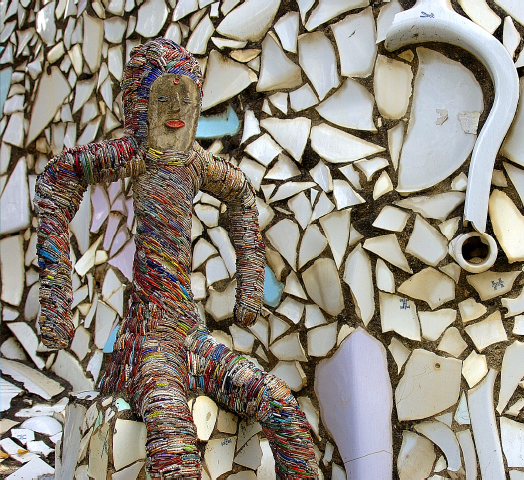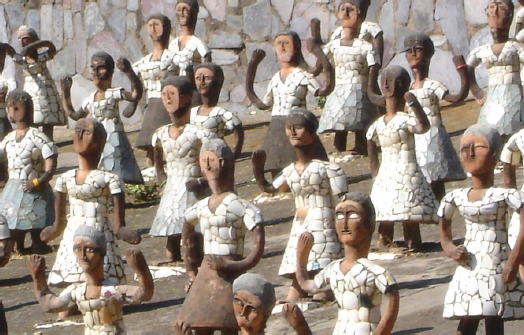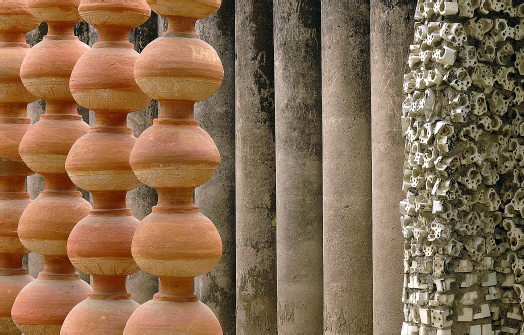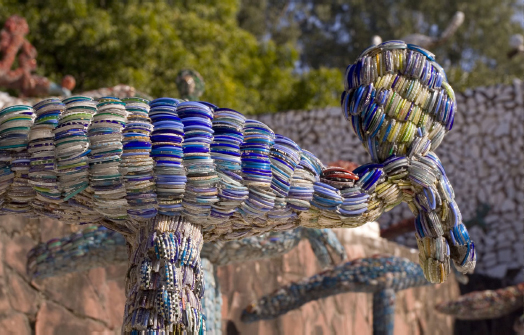
Rock Garden of Chandigarh: Oasis of Waste Products
Illegal Beginning
The Rock Garden of Chandigarh is a sculpture garden located in Chandigarh, a city in the Northern part of India. The garden is also known as Nek Chand's Rock Garden after its founder Nek Chand. Chand used to be a road inspector in the Engineering Department of the Chandigarh Capital Project. He started the garden secretly in his spare time in 1957.
Over many years, Chand roamed the Shivalik foothills and picked up stones resembling bird, animal, human, and abstract forms. He also collected interesting pieces of urban and industrial waste along the way. He picked an impoverished hut by a gorge in a forest near Sukna Lake and started building his own vision of the divine kingdom of Sukrani using the objects he found.
However, the gorge Chand selected was government land. It had been designated as a land conservancy in 1902, and nothing could be built on it. This made Chand's work illegal. In 1973, Dr. S. K. Sharma, who headed an anti-malaria party in the forest, accidentally stumbled upon the garden. Fortunately, instead of shutting down the project, the authorities decided that the garden made of rock, stone, and scrap was most unusual, and declared that it should be preserved in its present form.
The Rock Garden was officially inaugurated in 1976. With the inauguration of the park as a public space, Nek Chand was given a salary, the title of 'Sub-Divisional Engineer, Rock Garden', and a workforce of 50 labourers to help with the construction of the garden. The garden even appeared on an Indian postage stamp in 1983.


A Kingdom Built from Scrap
With the help of the government, Chand was able to complete his vision of the divine kingdom of Sukrani. The moment one enters the 'kingdom', the small entrance door makes the head bow, creating an ambience of humility in the presence of royalty. The tiny doorway leads to magnificent, almost surreal setting of a magical kingdom consisting of 14 different chambers—a forecourt housing natural rock forms; a royal poet's chamber; a musician's chamber with a pond and a hut; the main court (Durbar) with a king's throne and likenesses of gods and goddesses lining the court, etc. To view each chamber, one has to pass through a variety of doorways, archways, vestibules, and lanes in different dimensions, creating a feeling of suspense and curiosity at every turn.
Throughout the kingdom, one can see sculptures made from a combination of natural materials and urban and industrial waste. Chand used foundry lime-kiln and metal workshop wastes and skilfully shaped them into sculptures of human, animal, or abstract forms. Other sculptures were made with frame, mudguards, forms, handle bar, metal wires, play marbles, pieces of burnt bricks, and even hair recovered from barbershops!
Continuing the Vision
Today, the Rock Garden is spread over an area of 40 acres (160,000 square miles), and continues to be a magical kingdom completely built of a combination of natural materials such as stones and rocks as well as home and industry waste. Its existence and continued struggle for survival highlights the resilience of the human spirit as well as its amazing ability to transform ordinary waste product into something extraordinary and divine. However, despite its historical significance and international support, the future of the Rock Garden remains precarious. The work of the foundation and its supporters will need to continue in order to ensure that Nek Chand's vision of the divine kingdom of Sukrani can thrive way into the future.



